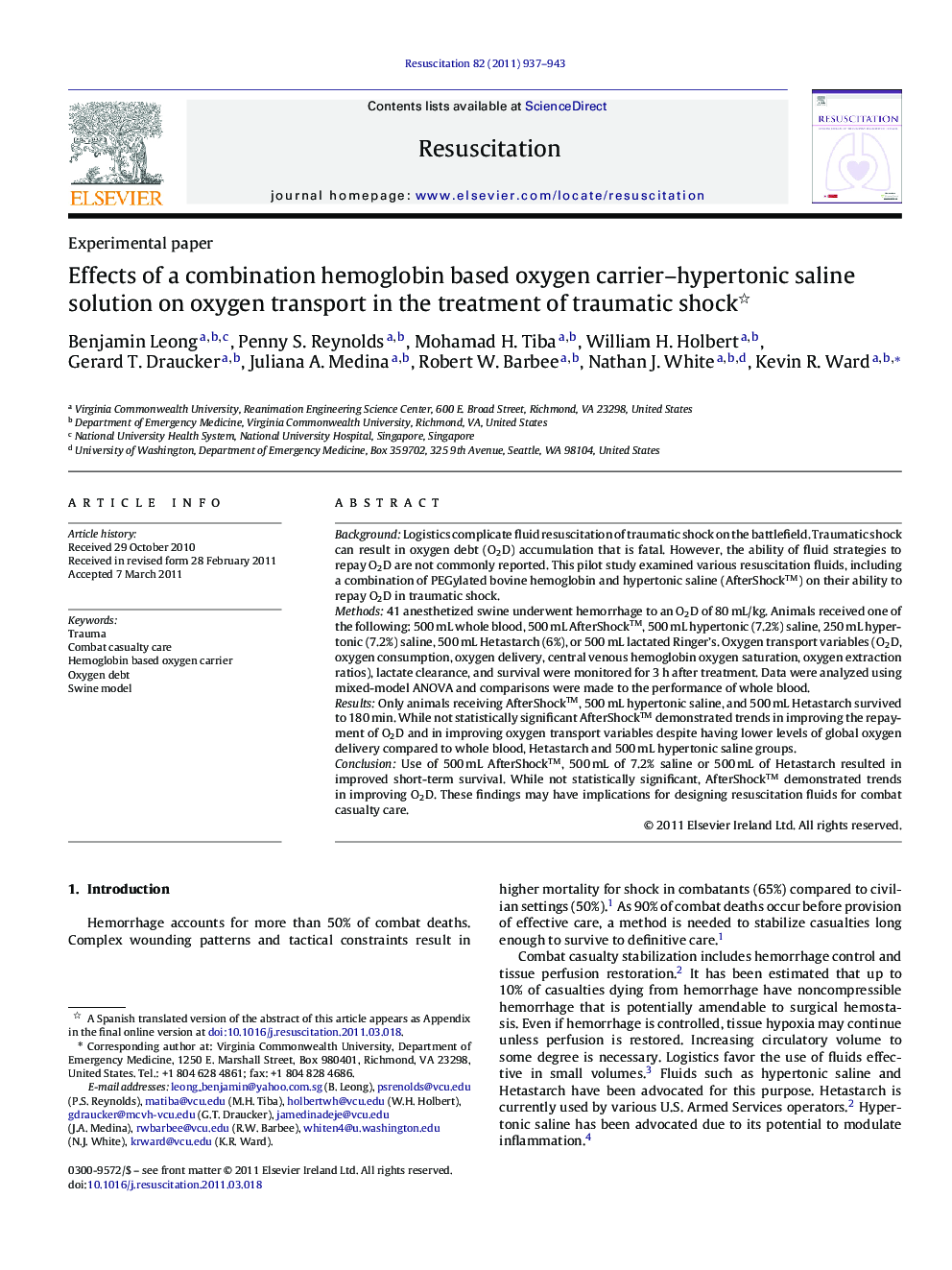| Article ID | Journal | Published Year | Pages | File Type |
|---|---|---|---|---|
| 5999280 | Resuscitation | 2011 | 7 Pages |
BackgroundLogistics complicate fluid resuscitation of traumatic shock on the battlefield. Traumatic shock can result in oxygen debt (O2D) accumulation that is fatal. However, the ability of fluid strategies to repay O2D are not commonly reported. This pilot study examined various resuscitation fluids, including a combination of PEGylated bovine hemoglobin and hypertonic saline (AfterShockâ¢) on their ability to repay O2D in traumatic shock.Methods41 anesthetized swine underwent hemorrhage to an O2D of 80 mL/kg. Animals received one of the following: 500 mL whole blood, 500 mL AfterShockâ¢, 500 mL hypertonic (7.2%) saline, 250 mL hypertonic (7.2%) saline, 500 mL Hetastarch (6%), or 500 mL lactated Ringer's. Oxygen transport variables (O2D, oxygen consumption, oxygen delivery, central venous hemoglobin oxygen saturation, oxygen extraction ratios), lactate clearance, and survival were monitored for 3 h after treatment. Data were analyzed using mixed-model ANOVA and comparisons were made to the performance of whole blood.ResultsOnly animals receiving AfterShockâ¢, 500 mL hypertonic saline, and 500 mL Hetastarch survived to 180 min. While not statistically significant AfterShock⢠demonstrated trends in improving the repayment of O2D and in improving oxygen transport variables despite having lower levels of global oxygen delivery compared to whole blood, Hetastarch and 500 mL hypertonic saline groups.ConclusionUse of 500 mL AfterShockâ¢, 500 mL of 7.2% saline or 500 mL of Hetastarch resulted in improved short-term survival. While not statistically significant, AfterShock⢠demonstrated trends in improving O2D. These findings may have implications for designing resuscitation fluids for combat casualty care.
